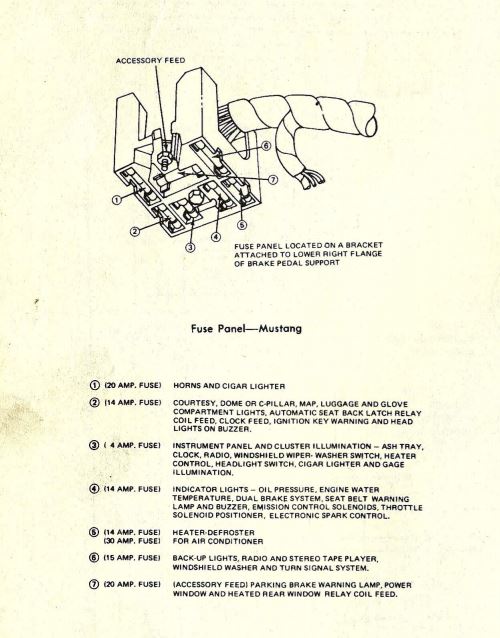- Joined
- Jan 30, 2014
- Messages
- 244
- Reaction score
- 5
- Location
- United States
- My Car
- 1973 Convertible
Father /Son resto-mod project
1 year in:
351 Cleveland- modified
Maier suspension
Tremec 5 speed
Hey Gang!
It's been awhile since I've been on, and the new look is great.
I'm hoping to get some help with a pesky fuse issue. At this point, we have around 7,000 miles on the car since its overhaul. It had been running great with no issues. It made a couple of 300 miles trips and everything was great. Then in the fall we began to have issues with the 14 amp accessory fuse popping at random. It wouldn't be a big deal except that the ignition circuit appears to run through the same fuse, so we it blows, we don't go! We've had to change fuses on the side of I-75 twice. Not good.
I searched the forum for posts on "ignition" and found a couple threads talking about the Tach wiring as a potential problem area. Rocketman rebuilt our tach, and we ran a dedicated wire to the coil. I'm thinking I'll look for where the original wires are to make sure they are connected together solidly.
Other than that, any suggestions on what to look for other than shorts?
Is it possible to run a dedicated ignition circuit, bypassing the accessory fuse?
As always, your experience and thoughts are appreciated.
Butch
It's been awhile since I've been on, and the new look is great.
I'm hoping to get some help with a pesky fuse issue. At this point, we have around 7,000 miles on the car since its overhaul. It had been running great with no issues. It made a couple of 300 miles trips and everything was great. Then in the fall we began to have issues with the 14 amp accessory fuse popping at random. It wouldn't be a big deal except that the ignition circuit appears to run through the same fuse, so we it blows, we don't go! We've had to change fuses on the side of I-75 twice. Not good.
I searched the forum for posts on "ignition" and found a couple threads talking about the Tach wiring as a potential problem area. Rocketman rebuilt our tach, and we ran a dedicated wire to the coil. I'm thinking I'll look for where the original wires are to make sure they are connected together solidly.
Other than that, any suggestions on what to look for other than shorts?
Is it possible to run a dedicated ignition circuit, bypassing the accessory fuse?
As always, your experience and thoughts are appreciated.
Butch





